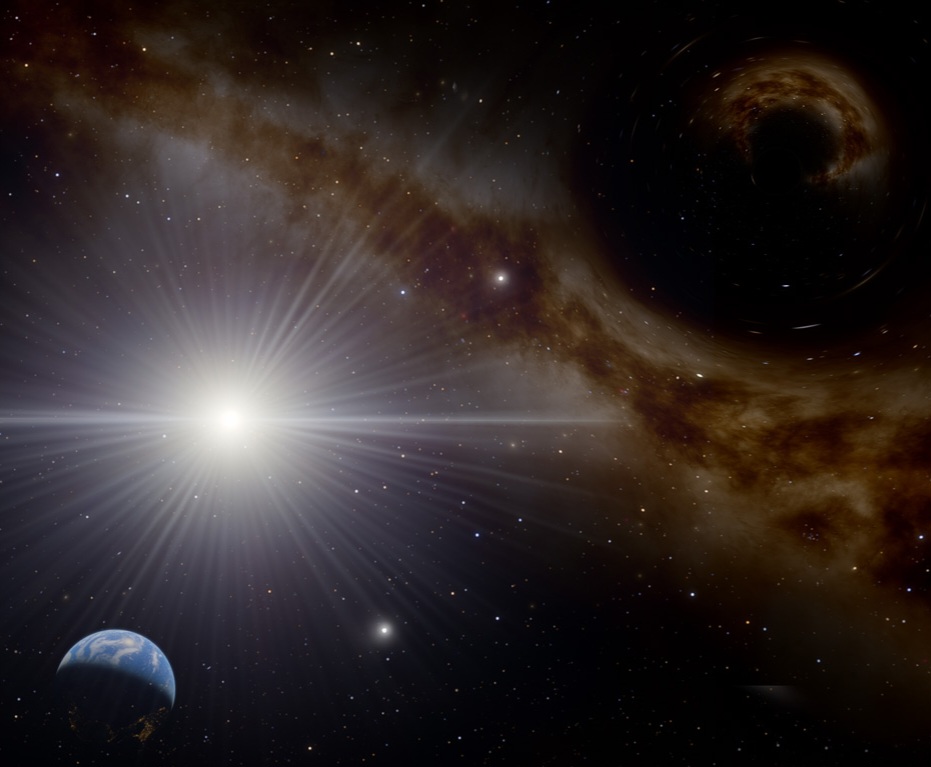Primordial Black Holes as a Potential Source of the Highest-Energy Neutrino Detected from Space

The detection of the most energetic neutrino ever observed has reignited debates on the possible astrophysical origins of ultra-high-energy particles. Recent mathematical modeling, published in Physical Review Letters (September 18, 2025), suggests that primordial black hole (PBH) explosions could serve as a source of these extreme-energy neutrinos. This research offers a unified framework linking neutrino physics, dark matter, and Hawking’s black hole radiation theory, though definitive evidence remains pending.
Introduction
Neutrinos are elusive, electrically neutral particles that interact minimally with ordinary matter. While most neutrinos observed on Earth are of low energy, originating from processes such as nuclear fusion in the Sun, rare detections of ultra-high-energy neutrinos pose unresolved astrophysical puzzles. In February 2023, a neutrino detector off the coast of Sicily recorded a particle carrying an estimated 220 million billion electron volts (eV)—approximately 35 times greater than the previous record holder. The origin of this unprecedented event remains unknown.
Theoretical Framework
Physicists David Kaiser and Alexandra Klipfel of the Massachusetts Institute of Technology (MIT) explored the hypothesis that primordial black holes, formed shortly after the Big Bang, could be the source of such extreme neutrinos. According to Stephen Hawking’s evaporation model, black holes emit radiation, gradually losing mass and eventually releasing bursts of high-energy particles upon final collapse. If PBHs constitute a portion of dark matter, their explosive endpoints may occasionally produce ultra-energetic neutrinos detectable on Earth.
Methodology
Kaiser and Klipfel conducted a multi-parameter analysis incorporating:
- Predicted PBH distributions across cosmic time,
- Expected rates of PBH evaporation events,
- The clustering of dark matter in galactic environments,
- Observational data from six of the highest-energy neutrinos recorded on Earth.
Their model suggests an approximate rate of 40 PBH explosions per cubic light-year annually in regions near the solar system. These events could plausibly generate neutrinos with energies comparable to the 2023 detection.
Results and Implications
The analysis indicates that a single PBH explosion occurring within the past 14 years and within 50 astronomical units of Earth could account for the record-setting neutrino. Importantly, the dispersal of such neutrinos is isotropic, making detections rare. If future observations show clustering of ultra-energetic neutrinos near the Galactic Center, this would support the hypothesis that PBHs are both a source of such particles and viable dark matter candidates.
This framework also lends partial empirical support to Hawking’s theory of black hole evaporation, providing a potential test case for one of theoretical physics’ most enduring propositions.
Scientific Debate
The hypothesis remains contested. Critics, such as Lua Airoldi of the University of São Paulo, argue that a PBH explosion near Earth should have produced gamma-ray signatures, which were not observed. Kaiser counters that the estimated distance of the event would render such emissions undetectable. Additionally, uncertainties in the recorded neutrino’s energy persist, given the detector’s incomplete construction at the time of observation.
Luigi Fusco of the University of Salerno emphasizes the attractiveness of the PBH hypothesis but cautions that alternative explanations remain viable. Independent physicist Kohta Murase of Penn State further notes that more rigorous observational evidence is required before drawing conclusions about PBH contributions to high-energy neutrino flux.
Conclusion
The proposition that primordial black holes may account for the highest-energy neutrino ever detected presents an elegant, though unproven, unification of several outstanding problems in physics. Confirmation would have profound implications for dark matter research, high-energy astrophysics, and quantum gravity. Nevertheless, competing interpretations and observational uncertainties underscore the need for further experimental and theoretical investigation.


